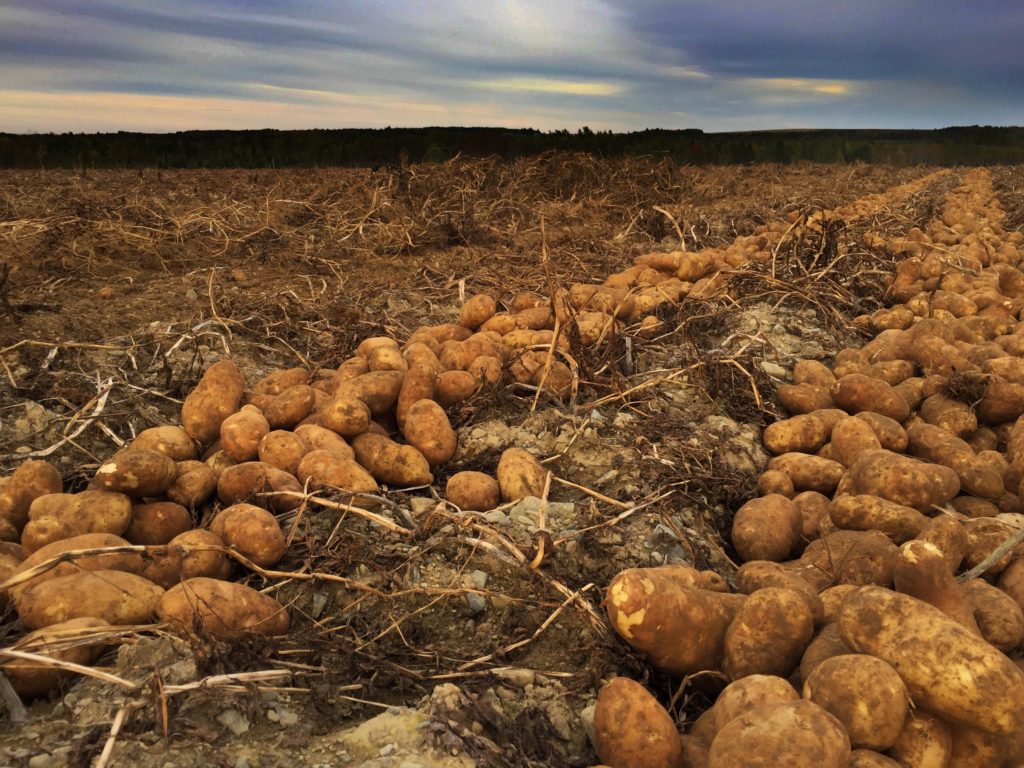
Make the first – and biggest – step toward sustainability
(Sponsored) Potato farmers today are pushing hard for sustainability. Regenerative, soil-health promoting practices like reduced tillage, cover cropping, and planting into more residue to reduce erosion are all increasingly mainstream. Those are important changes, since enhancing sustainability is key to agriculture’s longevity on environmental, economic and societal fronts. But, are many farmers still missing one of the biggest opportunities to make a giant leap towards sustainability?
Sustainable production is an integrated system of responsible practices that aims to meet today’s food, feed, fiber and other needs while ensuring production is possible tomorrow too. Sustainability cannot be only about prioritizing the environment at the expense of productivity. In fact, when it comes to feeding our world, one of the most critical parts of effective sustainability is maximizing productivity per acre. More productive land translates to less crop inputs and fewer equipment hours per unit of crop produced and less new land that has to be brought into production.
In most potato fields, the factor that restricts productivity – and therefore sustainability – is soil-borne pests and diseases. Potato farmers have limited means to fight back:
They can lengthen rotation. However, longer rotation means decreasing the efficiency of existing farmland, which consequently means having to utilize more land. In most cases, the only land to expand into that isn’t already under production is forest, prairie grassland, or desert: the valuable native lands and ecosystems that, once lost, are lost for good.
Alternatively, farmers can accept less and/or lower quality production, increasing their environmental footprint per unit produced. Unfortunately, this is the most common outcome and entirely counter to sustainability.
There is another option.
Chloropicrin (the active ingredient in Strike) is a selective soil fumigant that effectively manages a wide variety of soil- borne diseases including early die complex (verticillium and lesion nematode), rhizoctonia, black dot, common scab, and some nematodes. TELONE™ is a selective insecticidal fumigant that manages key pests including root-knot, lesion, stubby-root, dagger, ring and cyst nematodes. Both products – which can be applied individually, as blends, or co-applied – boost tired, overworked, diseased soils, producing more yield and ultimately more profit.
Chloropicrin suppresses disease in two distinct but complimentary ways. The first avenue of management is direct suppression: the molecule penetrates the bacterium or fungal pathogen and kills the organism.
The second form of management is indirect: chloropicrin promotes the population of beneficial microbes called saprophytes that predate on the overwintering structures of disease pathogens. Chloropicrin does not sterilize the soil. Rather, it is a highly targeted input that manages crop- inhibiting invaders while simultaneously supporting diverse, healthy, productive soils.
“Chloropicrin offers an initial knockdown of disease via chemical control and then a secondary knockdown by enhancing the biology of the soil. More saprophytes mean better disease management. Both play an important role in chloropicrin’s efficacy,” says Chad Hutchinson, global director of potato research and market support for TriCal Group.
More saprophytes also mean generally healthier soil. Saprophytes feed on organic matter, thereby recycling the macro- and micronutrients that plant growth depends on. Saprophytes support soil structure and water permeability and form the basis of the complex ecosystem critical to healthy, functional soil. They also form tight, symbiotic relationships with plant roots.
“Following an application of chloropicrin, we see an immediate flush of saprophytes in the soil. Saprophyte populations, especially bacterium like Bacillus and even fungi like Trichoderma, can expand to the point in well-managed soil that they’ll encase plant roots. The plant provides the microbes with sugars, the microbes deliver critical nutrients directly
to the root and the farmer gets to harvest a bigger crop,” says Hutchinson.
Hutchinson says that, while seemingly everyone wants to be sustainable, actually achieving meaningful sustainability is an uphill battle unless a production system starts with soil-borne disease management.
“If you can’t get a handle on soil-borne pests and disease, the chances of being able to hit any sustainability targets is much more difficult,” says Hutchinson. “There’s a big misunderstanding in the marketplace that soil fumigation is environmentally negative. In reality, fumigation with products that promote soil health and productivity is a great step towards sustainability.”
Hutchinson agrees that it can be challenging for some to move past what he calls the “philosophical hump” that slows adoption of new-generation fumigation.
“Education is so important. Green and sustainable shouldn’t necessarily mean opting to use no chemicals. It should mean using the right inputs at the right time and in the right way to achieve the biggest impacts to both productivity and sustainability,” he says. “As farmers realize that fumigation can promote the good and manage the bad at the same time – our industry can make the steps forward that feeding the world requires.”

Strike is a Federally Restricted Use Pesticide. TELONE™ is a Trademark of the Dow Chemical Company (”Dow”) or an affiliated company of Dow, used under license. TELONE™ is a federally Restricted Use Pesticide. Always read and follow label directions.
To learn more about Strike Fumigants, visit https://strikefumigants.com/
ADVERTISEMENT | © 2023 TriEst Ag Group, Inc.







